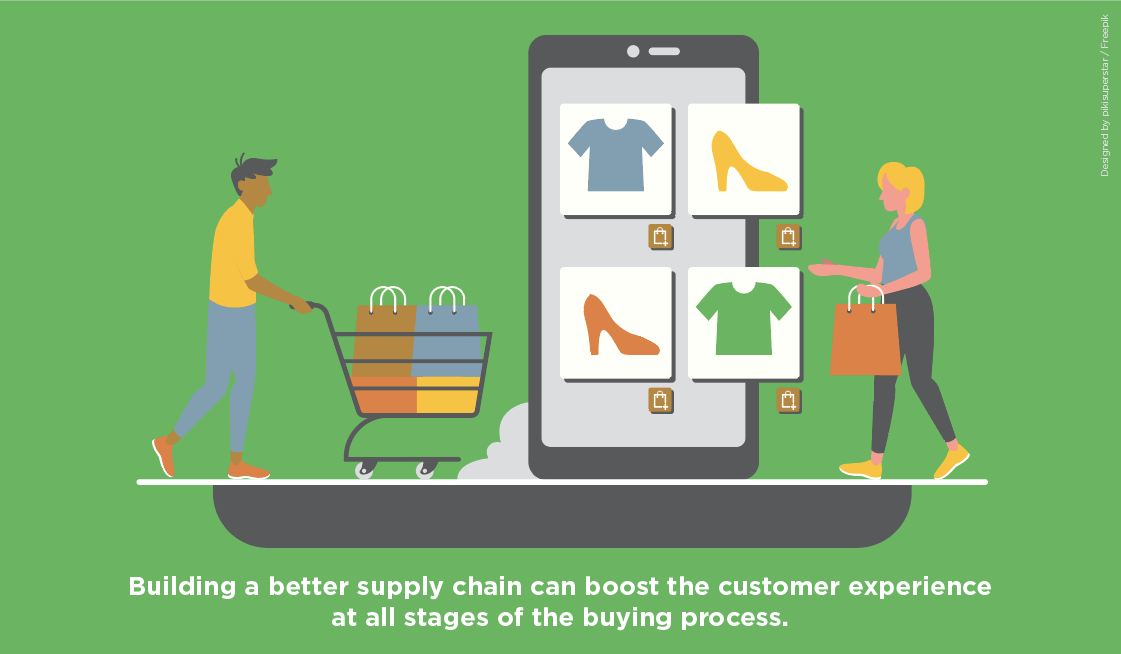Noted author and poet Ralph Waldo Emerson is credited with saying that in life, “it’s not the destination, it’s the journey” that’s important. This famous phrase encapsulates what customers are looking for from their purchases. While the final product is certainly important, buyers expect that the process of getting there will be every bit as good — if not better — than the end result, whether they’re ordering a pizza online, trying on a pair of shoes, or taking a new car for a spin.
The best way to ensure your organization maximizes customer satisfaction is by improving your supply chain. When a supply chain is resilient, it enhances brand loyalty by providing the consistency, predictability, and quality that customers don’t just want, but expect.
Providing a great customer experience has always been a goal for business owners, but there’s been an enhanced focus on ensuring it in recent years. This is partially due to societal trends and a generational shift in people buying.
Buyers highly value experiences
According to research conducted by advertising agency Momentum Worldwide, over three-quarters of respondents said that when it comes to how they spend their money, customers prefer to put it towards actual experiences as opposed to things or belongings.
Not only that, but when the advertising agency asked respondents what they most valued from businesses and brands that they purchased from, they routinely used verbiage that was evocative of “inspiration” and “meaning.” The percentage increase in the usage of these terms was up 200% from a similar study Momentum Worldwide performed in 2012.
“In just a few short years we’ve seen an enormous shift in consumer sentiments towards brands and their involvement in live experiences,” said Momentum Worldwide CEO Chris Weil in a press release.
Weil added that regardless of what brands may produce or provide in terms of goods and services, they need to be ever cognizant of the buying experience to enhance brand loyalty, which is easier to obtain when buyers have an emotional connection. That connection is achieved through the buying journey rather than the purchase itself.
The prioritization of the customer experience is also a symptom of brands’ target audience, which for the most part is made up of millennials (those born between 1980 and 1996) and Generation Z (born between the late 1990s and late 2000s). In a survey from Harris Group, nearly 80% of millennials said they’d pick a desirable experience over a desirable item if they had to choose between the two.
This isn’t to suggest that consumers don’t value products; just that their purchasing decisions are reflective of the totality of their experience rather than one particular phase of it.
Here are a few ways you can build a better supply chain so it boosts customer satisfaction at all stages of the buying process.

Do your research
The key to optimizing your supply chain is by knowing your end result and working backward. As Forbes contributor Richard Howells notes, you have to know what your customer wants and doesn’t want. You can determine your customers’ needs by leveraging market research, competitive analysis, and what they’re buying.
“As we design smarter products, we can even leverage data directly from the products about how they are being used and how they are performing,” Howells wrote.
Build a more resilient supply chain
If anything became quite clear in the aftermath of the COVID-19 crisis, it’s the fragility of the supply chain. In a poll performed by the National Retail Federation in the early days of the pandemic, 40% of business owner respondents said they were already seeing disruptions as a result of the coronavirus.
More than a year and a half later, those supply chain disruptions persist. You can build a more resilient supply chain by diversifying your suppliers so you aren’t reliant on one, Inc recommended.
Opt for omnichannel
At one time, buying online was an option for customers; today, it’s frequently prioritized over in person, given the convenience and simplicity of it. Howells says that a way to make the ordering experience even better is through omnichannel sales — a strategy that enables users to reach your website from whatever device they’re using. This may involve making your website more user-friendly for smartphones and social media or making the shopping experience more personalized.
The best way to harmonize your supply chain with the customer experience is by bringing the two together. Oracle can help with the Oracle Service Logistics Cloud. This end-to-end solution combines field service, supply chain operations, and the customer experience into a single, integrated cloud solution. To learn more, visit our solutions page.